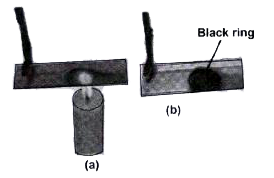When sodium or potassium is dropped in water, we can observe a golden yellow or a lilac coloured flame respectively whereas when calcium is dropped , no flame is observed . Why is there a difference in observation in the above two cases?
(i) Comparision of Na , K , Ca with that of water.
(ii) Comparision of physical properties of Na , K and Ca.
(iii) Type of reaction that takes place when these metals react with water .
(iv) Condition required for burning.
Topper's Solved these Questions
- WATER, SOLUTION, SOLUBILITY AND HYDROGENBOOK - PEARSON IIT JEE FOUNDATIONCHAPTER - WATER, SOLUTION, SOLUBILITY AND HYDROGENEXERCISE - Concept Application Level-3
10 Videos
- WATER, SOLUTION, SOLUBILITY AND HYDROGENBOOK - PEARSON IIT JEE FOUNDATIONCHAPTER - WATER, SOLUTION, SOLUBILITY AND HYDROGENEXERCISE - EXAMPLES
4 Videos
- WATER, SOLUTION, SOLUBILITY AND HYDROGENBOOK - PEARSON IIT JEE FOUNDATIONCHAPTER - WATER, SOLUTION, SOLUBILITY AND HYDROGENEXERCISE - Concept Application Level-1
42 Videos
- SYNTHETIC FIBRES AND PLASTICS BOOK - PEARSON IIT JEE FOUNDATIONCHAPTER - SYNTHETIC FIBRES AND PLASTICS EXERCISE - COMPETITION CORNER (Choose the correct option)
53 Videos
Similar Questions
Knowledge Check
What will you observe when calcium is treated with water?
AIt reacts violently with water.BIt reacts slowly to form calcium oxide.CBubbles of hydrogen gas are formed which stick to the surface of calciumDIt does not react with water.In the flame test, a golden yellow coloured flame is observed. Then which of the following statements is incorrect?
ANa+ ion may only be present.BK+ is absent.CThe presence of Na+ ion is confirmed.DNa+ and K+ ions both may be present together.When a colloidal sol is observed under a microscope we can see,
ALight scattered by colloidal particlesBSize of colloidal particlesCShape of colloidal particlesDRelative size of the colloidal particles
When an objects is seen through a calcite crystal, we observe two images. Why ?
View SolutionRohan observed that if a small piece of sodium is added to water it catches fire whereas a piece of calcium added to the water it does not catch fire. Can you explain his observations with the help of the chemical equations?
View SolutionMention with reason the colour changes observed when :
a piece of zinc is dropped in copper sulphate solution.
View SolutionWith respect to the sodium-potassium pump, what changes will be observed when one molecule of ATP is used during the process?
View SolutionWhen you introduce a glass plate into the luminous zone of a candle flame for a few seconds, the observation is as shown in figure (b). What does the observation indicate?

View Solution
